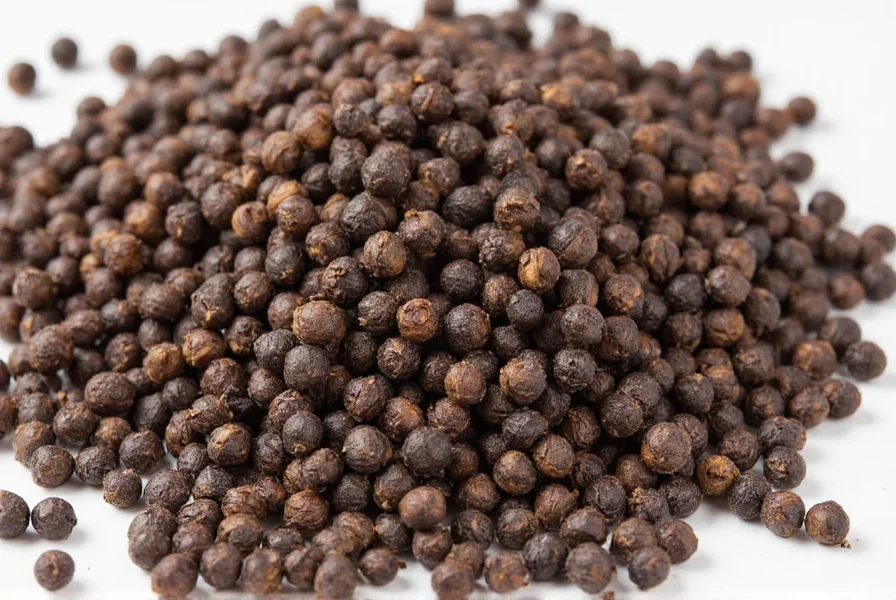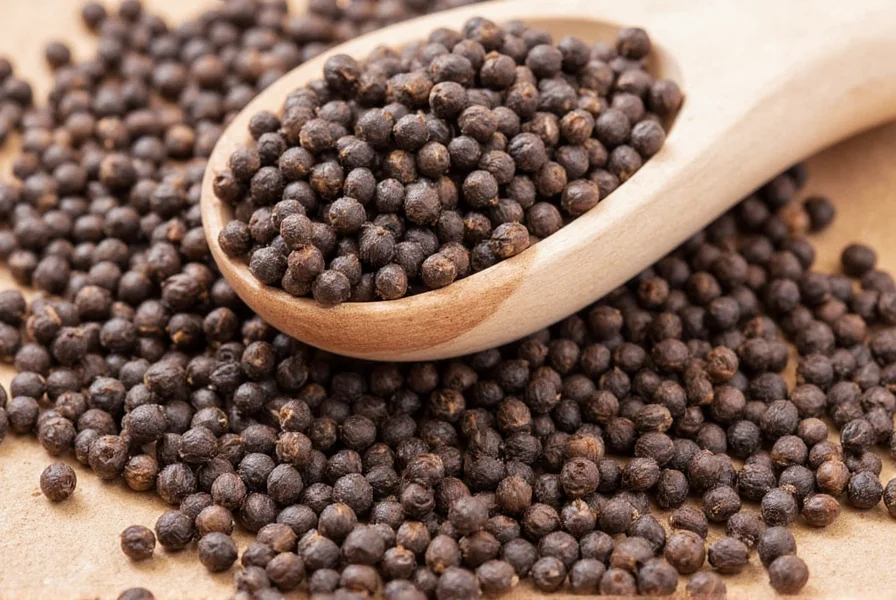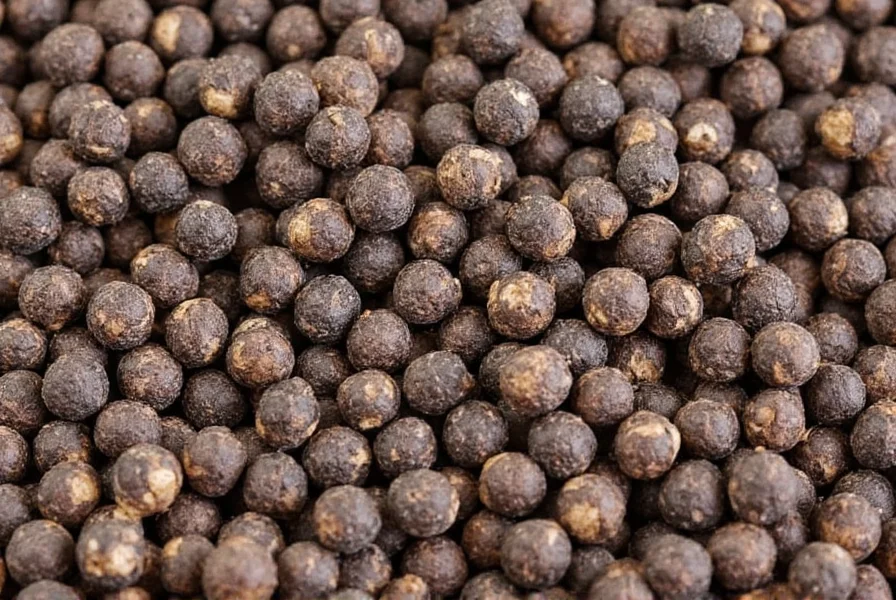16 mesh black pepper refers to a specific grind size where the pepper particles pass through a sieve with 16 openings per inch, resulting in a medium-coarse texture measuring approximately 1,000-1,400 microns. This grind is ideal for applications requiring visible pepper texture without being overly coarse, such as meat rubs, marinades, and certain commercial food production processes where consistent particle size matters.
Understanding mesh sizes is crucial for both culinary professionals and home cooks who want to achieve specific flavor profiles and textures in their dishes. The "mesh" measurement system provides an objective standard for pepper grind consistency that goes beyond vague terms like "coarse" or "fine" found on consumer packaging.
What Does Mesh Size Actually Mean?
Mesh size in spice grading refers to the number of openings per linear inch in a standardized sieve. The higher the mesh number, the finer the grind. A 16 mesh sieve has 16 openings per inch, creating openings approximately 1,000-1,400 microns in diameter. Pepper that passes through this sieve but remains on a finer sieve (like 20 mesh) is classified as 16 mesh.
This measurement system originated in industrial screening processes and has been adopted by the spice industry for precise quality control. Unlike consumer labels that might say "medium grind" with no standardization, mesh sizes provide an objective measurement that remains consistent across suppliers and batches.
| Mesh Size | Particle Diameter (microns) | Common Names | Typical Applications |
|---|---|---|---|
| 8-10 mesh | 2,000-2,800 | Extra coarse | Pepper mills, pickling, sausage making |
| 12-14 mesh | 1,400-1,700 | Coarse | Meat rubs, grilling, artisanal applications |
| 16 mesh | 1,000-1,400 | Medium-coarse | Commercial food production, marinades, dressings |
| 20-24 mesh | 710-850 | Medium | General cooking, seasoning blends |
| 30-40 mesh | 355-600 | Fine | Baking, spice mixes, sauces |
Why 16 Mesh Offers Unique Culinary Advantages
Among various black pepper grind sizes, 16 mesh occupies a strategic middle ground that offers distinct advantages for specific applications. This medium-coarse grind provides enough texture to be visually noticeable in finished dishes while still distributing relatively evenly.
Professional chefs and food manufacturers choose 16 mesh black pepper when they need consistent particle size for quality control purposes. In commercial food production, this specific grind ensures uniform flavor distribution in products like ready-to-eat meals, sauces, and seasoning blends where texture consistency is critical to product quality.
Unlike finer grinds that can become bitter when overcooked, 16 mesh black pepper maintains its aromatic compounds better during extended cooking processes. The slightly larger particles release flavor more gradually, creating a more complex flavor profile in slow-cooked dishes.

Practical Applications for 16 Mesh Black Pepper
Understanding where to apply 16 mesh black pepper can significantly impact your culinary results. This specific grind excels in several key areas:
Meat Preparation and Grilling
When creating dry rubs for meats, 16 mesh black pepper provides the perfect texture to adhere to meat surfaces without being so fine that it burns on the grill. The medium-coarse particles create a flavorful crust while allowing other spices in the rub to distribute evenly.
Marinades and Dressings
Unlike finer grinds that can become muddy in liquid preparations, 16 mesh black pepper maintains distinct particles in marinades and vinaigrettes. This provides visible specks of pepper throughout the dressing and ensures consistent flavor in every bite of marinated food.
Commercial Food Manufacturing
Food producers rely on 16 mesh black pepper for products requiring visible pepper texture without being overwhelming. This includes items like premium soups, ready-made sauces, and specialty condiments where consumers expect to see and feel the pepper.
How to Identify Quality 16 Mesh Black Pepper
Not all products labeled as 16 mesh deliver consistent quality. When selecting 16 mesh black pepper, look for these indicators of quality:
- Consistent particle size - High-quality 16 mesh should have minimal variation in particle size
- Freshness indicators - Check for harvest or grinding dates, as black pepper loses volatile oils over time
- Packaging - Opaque, airtight containers preserve flavor better than clear containers
- Aroma - Should have a sharp, pungent scent without mustiness
- Color consistency - Uniform dark brown to black color indicates proper processing
For professional applications, request sieve analysis reports from suppliers to verify the actual particle size distribution. Reputable spice suppliers will provide this technical information upon request.

Storage Recommendations for Maximum Flavor Retention
Proper storage is critical for maintaining the flavor profile of 16 mesh black pepper. The increased surface area compared to whole peppercorns means it degrades faster. Follow these storage guidelines:
- Store in an airtight container away from light, heat, and moisture
- Use dark glass or opaque containers rather than clear plastic
- Keep away from strong-smelling foods as pepper readily absorbs odors
- For extended storage (beyond 3 months), consider refrigeration in a completely sealed container
- Grind only what you'll use within 1-2 months for peak flavor
Unlike whole peppercorns that can remain flavorful for years, 16 mesh black pepper begins losing its volatile aromatic compounds within weeks of grinding. For best results, purchase smaller quantities more frequently rather than large bulk amounts unless you have proper storage conditions.
Common Misconceptions About Pepper Mesh Sizes
Several myths persist about pepper grind sizes that can lead to suboptimal culinary results:
- "Higher mesh means better quality" - Mesh size indicates grind, not quality. Premium whole peppercorns can be ground to any mesh size.
- "All 'coarse' grinds are the same" - Without mesh specifications, "coarse" can mean anything from 10-20 mesh depending on the supplier.
- "Finer grinds are always more flavorful" - While finer grinds release flavor faster, medium-coarse grinds like 16 mesh provide more complex, sustained flavor release.
- "Mesh size doesn't matter for cooking" - Particle size significantly impacts flavor release rate, texture, and visual presentation in finished dishes.
Practical Tips for Using 16 Mesh Black Pepper
Maximize the potential of 16 mesh black pepper with these professional techniques:
- Add during the last 10-15 minutes of cooking to preserve volatile aromatic compounds
- Toast briefly in a dry pan before use to enhance flavor complexity
- Combine with other medium-coarse spices for uniform seasoning blends
- Use in applications where you want visible pepper texture without being overwhelming
- When substituting for whole peppercorns, use approximately ¾ the amount by volume
For home cooks without access to specific mesh sizes, creating your own approximation of 16 mesh is possible by grinding whole peppercorns until they resemble coarse sand with some slightly larger pieces. The goal is particles roughly the size of small seeds that are noticeable but not chunky.











 浙公网安备
33010002000092号
浙公网安备
33010002000092号 浙B2-20120091-4
浙B2-20120091-4